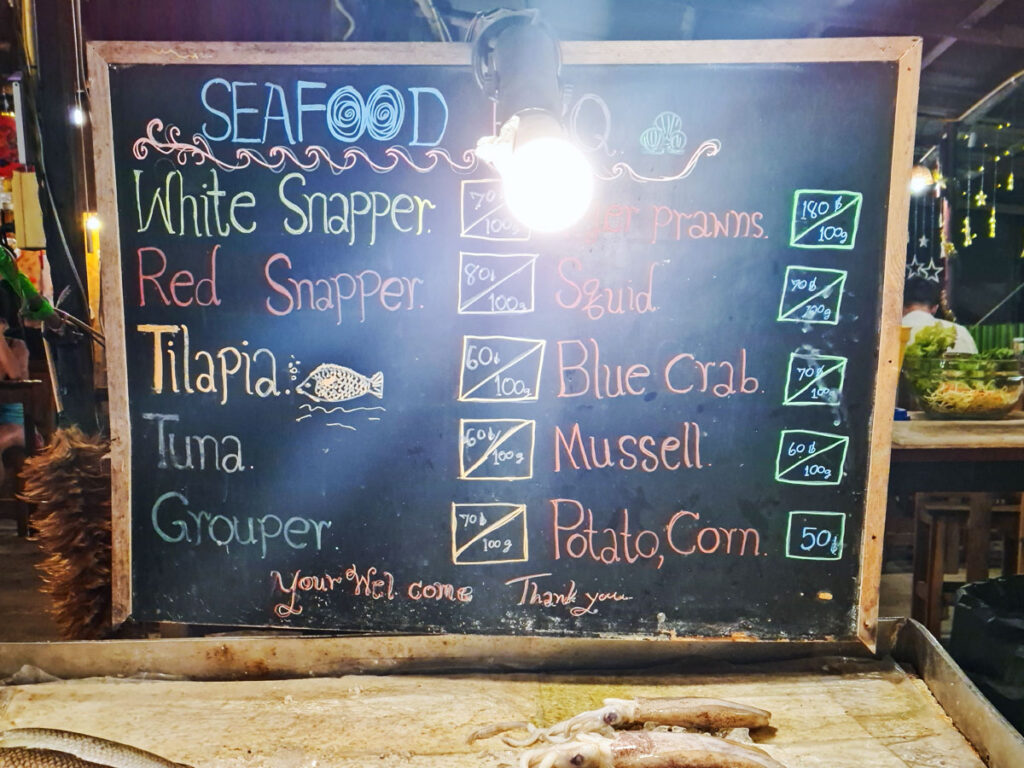
Last updated: 10 May, 2025 @ 12:11
Many travel bloggers write about the breath-taking beauty of Railay, Thailand and its turquoise sea, powder-sugar sands and picture-postcard setting. However, we weren’t in town in search of yet more advertiser-friendly superlatives. No, we were on a mission to discover more about the area’s seafood.
The iconic longtail boats of southern Thailand provide the main way of reaching the peninsular of Railay, which is so small it barely makes a dent into the Andaman Sea (and yes, its turquoise waters).
The outboard engines of the timber-built longboats noisily clatter and pop, the vessels sitting low in the water – arriving loaded with not only platoons of advancing tourists, but also supplies in the form of ice, fuel, beer – and fish.
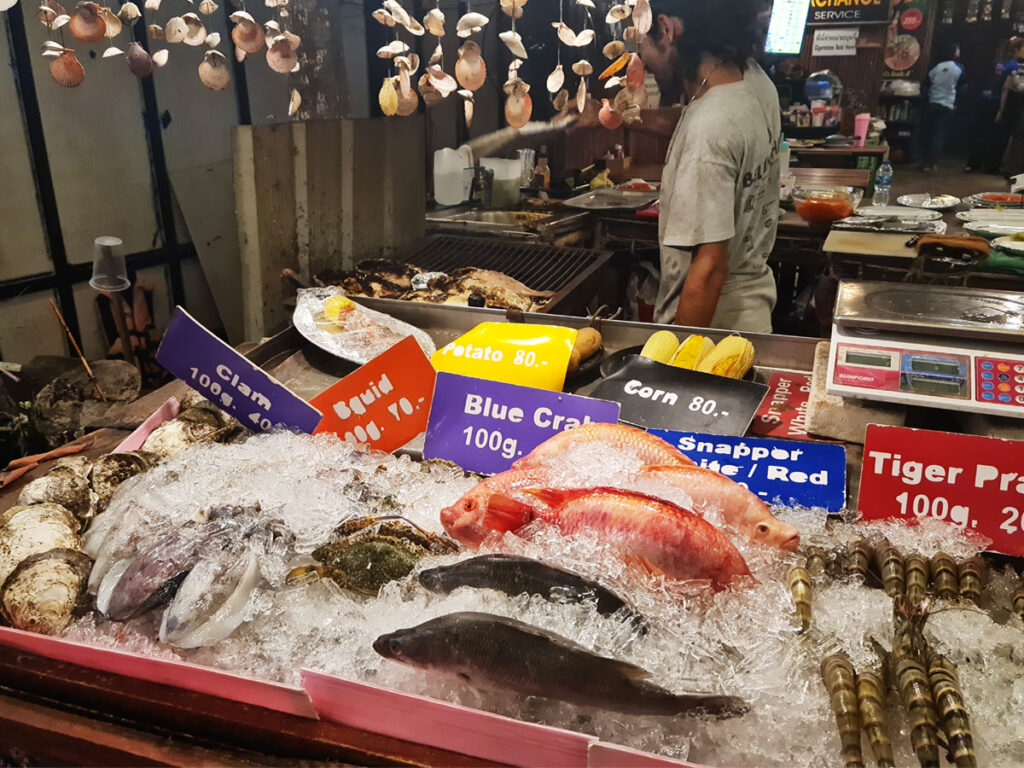
Good selection of seafood
Railay is hugely popular with tourists, both day-trippers and those staying at one of the peninsulas plentiful resorts.
Subsequently, there’s a varied and interesting choice in places to eat – from little barbeques and grills selling homemade chicken and beef skewers (served with a confident, cocky chilli sauce) unusually located outside of busy convenience stores, to posh beachside resorts and their à la carte menus.
Somewhere in between are the restaurants of Railay’s main Walking Street and those lining the peninsula’s less-pretty-to-some east beach – many of which boast a good selection of seafood displayed in iced counters right under the eyes, and noses, of those walking past.
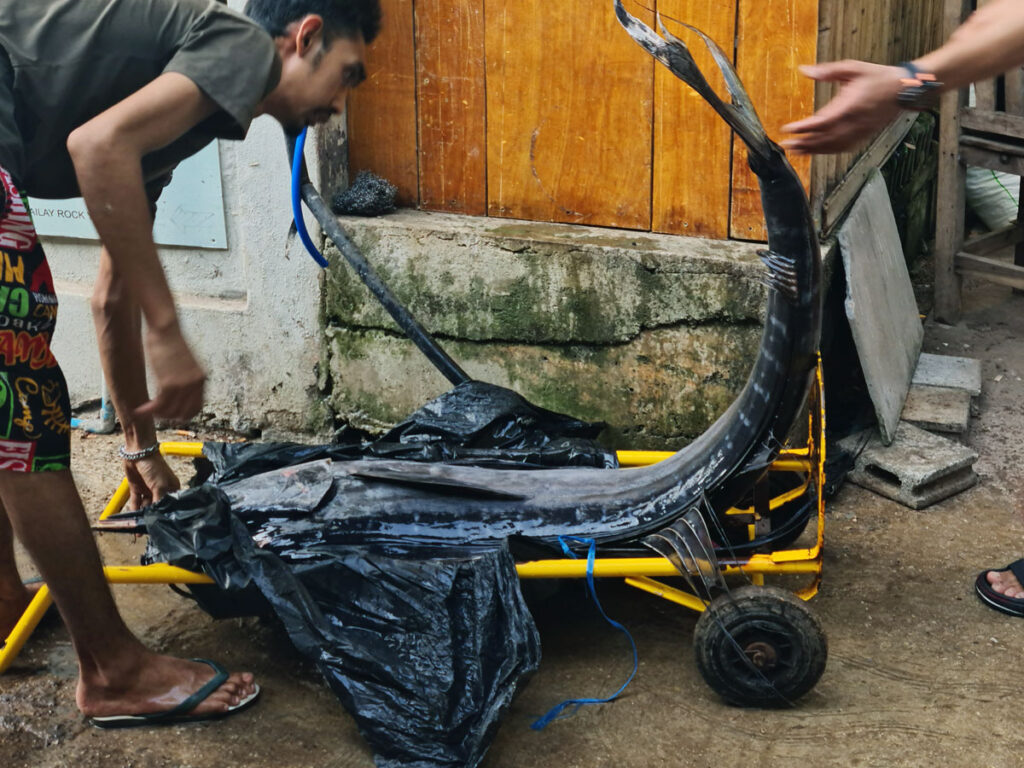
Freshly landed marlin
Most of the fish species are stiff fresh, bright-eyed and glistening. They’re often accompanied by huge tiger prawns, oysters, lobsters, squid and live blue swimming crabs.
Occasionally, a freshly-landed marlin will be on display, its pectoral fin raised to dramatic effect. The fish is known locally as the ‘Queen of the Sea’, and there’s even an impressive statue of a marlin at nearby Ao Nang, from where the majority of longtail boats depart for Railway.
However, two species in particular seemed to feature prominently on the display counters of most restaurants. Intriguingly, they were sold as snappers – the choice being red or white. (The white ‘snapper’ was also sometimes sold as sea bass).
Snapper – the world’s most popular fish?
The use of ‘snapper’ as a catch-all label for different fish species is widespread.
As this Guardian article highlights, in a comparison of sales of fish labelled ‘snapper’ by fishmongers, supermarkets and restaurants in Canada, the US, the UK, Singapore, Australia and New Zealand, researchers found mislabelling in about 40% of fish tested.
The UK and Canada had the highest rates of mislabelling in that study, at 55%, followed by the US at 38%.
Now, we’re not saying the fine and highly skilled restaurateurs of Railay are practising wide-spread seafood fraud. After all, the term ‘snapper’ is well known the world over, and therefore familiar and appealing to the diverse range of international tourists flowing in and out of the peninsula.
No, the quest we undertook was to try and establish the real identity of these two popular species.
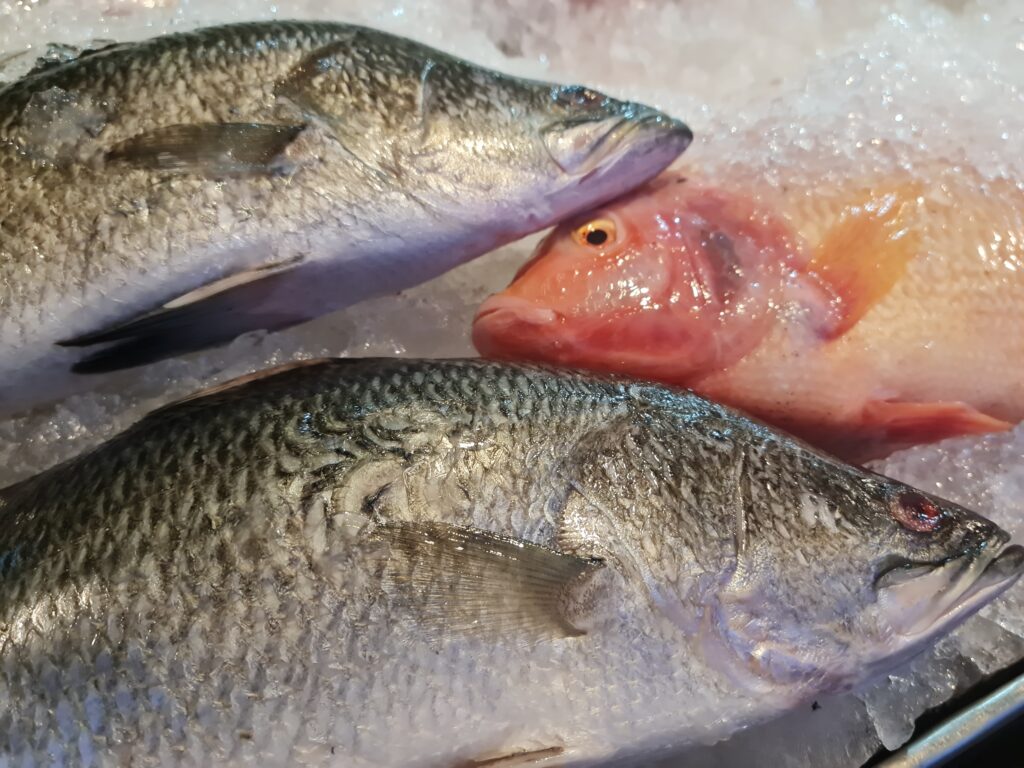
Thai flavours: chilli, tamarind and lime
The ‘red snapper’ was really very good. The simple bone structure of the fish allowed for easy and enjoyable eating – the flesh plump and moist.
The fish stood up well to the power of Thai flavours – embracing the likes of chilli, tamarind and lime with ease.
We tried the fish deep fried, and also butterflied and barbequed. On both occasions the fish was served whole, and each time the cookery was impeccable – the dish spectacular in its sheer simplicity.
The ‘white snapper’ was even better. Despite displaying a subtle, mild flavour, the fish again withstood the strength of Thai ingredients.
When barbequing, the chef – complete with cigarette in hand, turned the butterflied fish on several occasions whilst continually squeezing fresh lime over flesh that looked irresistible in the glow of hot coals.
Interestingly, the fish was butterflied from the top, leaving the belly side intact. Whether this aided the cooking it’s hard to say, but again the dish was refreshingly brilliant in its simplicity, the accompanying sweet, tart, spicy papaya salad proving the perfect partner.
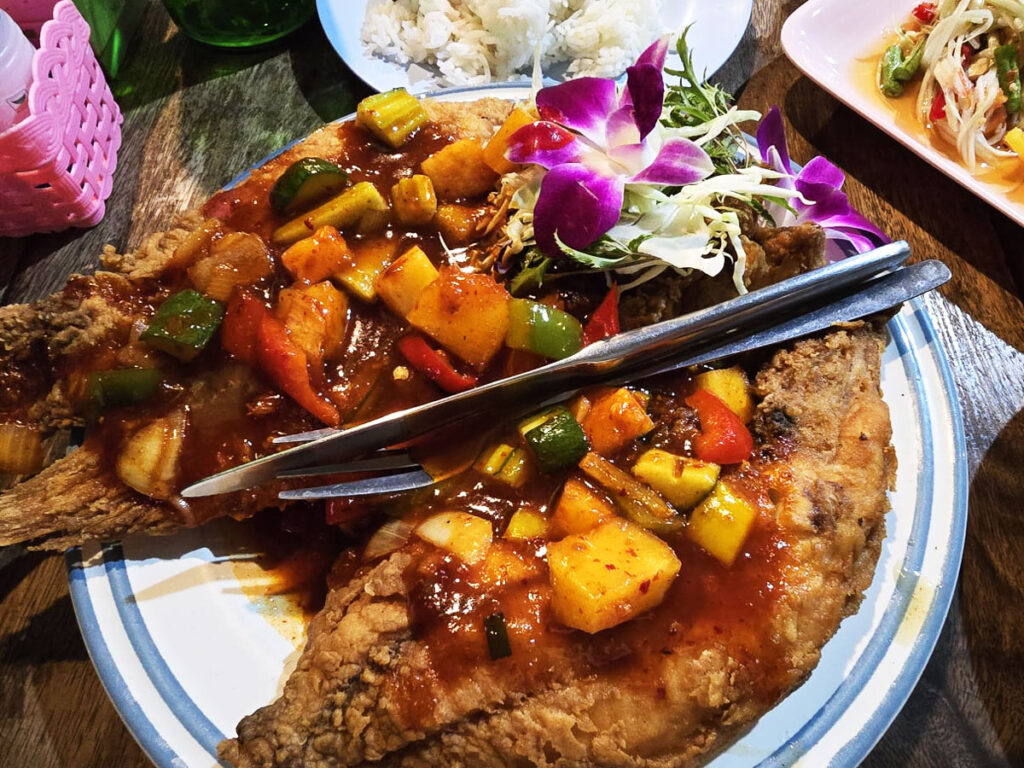
The true identity of the ‘snappers’
So, the question is: what are these magical fish?
Were they found in those travel blogger favourite turquoise inshore waters of the Andaman Sea, hand-caught that morning and landed by longtail boat onto the powder-sugar sands of nearby beaches?
Surprisingly, the answer is no.
The deliciously and versatile red snapper is actually a farmed Thai red tilapia, a fish introduced to pools and pens in Thailand in the 1970s.
It was more surprising to learn that the even better tasting ‘white snapper’ is another farmed fish – the barramundi, sometimes also called the Asian sea bass. Known locally as pla kapong it is one of the most popular fish in Thai cooking.
As somebody who tends to avoid farmed fish this discovery was somewhat disturbing. Even more so because wherever we went in Railay the fish looked and tasted so fresh.
The meaning of travel
The writing of another article, and more research on our part, is needed to explore the practices and ethics of fish farming – as it’s a complex and wide-ranging topic.
However, as our time in Railay neared its end, the true identities of the seafood we enjoyed made us question some of our own beliefs and thoughts surrounding the intricate web of food production and fish farming.
And as Mark Twain wrote: ‘Travel is about powder-sugar sands and picture-postcard settings fatal to prejudice, bigotry and narrow-mindedness’.
Further reading: Fish Face Seafood Blog in Thailand
Read more about the Fish Face Seafood Blog trip to Thailand, including our visit to Bangkok’s Chinatown district, and our thoughts on cuttlefish-flavoured crisps.